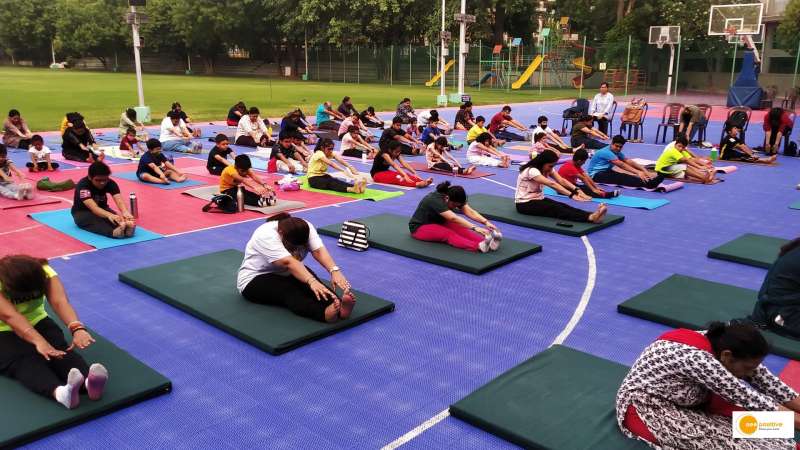

Introduction
Since yoga is India’s eternal gift to the world, it must be included in the curriculum. The United Nations has designated June 21 as International Yoga Day in response to India’s attempts. Yoga is seen as a powerful energy that enables one to think positively and move through life with confidence and positivity. Today’s youth frequently deal with anxiety, despair, and restlessness as a result of the world’s reliance on technology and intense competitiveness. Here, yoga and meditation can give them the key to eternal life and help them deal with the chaos all around them. Yoga enables young people to develop a robust and healthy body, mind, and spirit—essential components for moving forward in life with promise.
Yoga practice helps to increase focus and attention so that tasks can be completed successfully and with originality. Children can benefit psychologically from yoga and mindfulness. A growing body of research has already shown the benefits of yoga for children, including how it can boost their focus, memory, self-esteem, academic achievement, and classroom behavior.
Helping you to relax
Given the amount of stress children experience, yoga should be taught in schools and institutions. They will become healthier and reduce their tension by doing yoga. The peace it gives will lessen the increasingly common aggressive behavior among children today. Healthy activity on campus will help them achieve good sleep at night. By developing the mind-body connection, yoga will make youngsters and grownups become more confident and build endurance.
Yoga, which incorporates controlled breathing, will aid in teaching them self-control, which will prevent them from reacting irrationally in emotionally charged situations. As a result, they will be able to manage their anger and make wise decisions when necessary. The weight issue that youngsters have as a result of eating junk food is another key issue that yoga can address. Regular yoga poses will counteract the negative effects of fast food and assist them in maintaining an age-appropriate weight.
Aids in the growth of the whole
Yoga in the classroom can encourage moral behavior change, reduce stress, and advance human ideals. Additionally, it can promote a healthy way of life. Students are given an excessive amount of academic work, which increases their stress levels and prevents them from taking breaks. Therefore, yoga will promote holistic development if it is incorporated into education.
Yoga classes at schools may also help pupils’ academics. For instance, during one study, 112 high school students were randomly allocated to participate in yoga or physical activity twice a week for 45 minutes. The yoga group had an overall grade point average (GPA) that was significantly higher than the PE group among students who participated in yoga at a high rate.
Boosts Self-Belief and Self-Esteem
Yoga is tangible. Children develop strength, stamina, self-assurance, and the mind-body connection through asanas. After engaging in this for some time, you can evaluate the improvements and optimism you have experienced. Strength, compassion, and acceptance are also brought into the real world along with the confidence developed on the yoga mat.
Although yoga is an ancient practice, it is more vital than ever in the modern world. This is merely the tip of the iceberg in terms of yoga’s advantages. It has numerous tangible and intangible benefits that can support a happy and healthy way of life. Give your child yoga in plenty and watch the advantages gradually materialize These are some incredible advantages of yoga in schools.
Yoga can help with
• levels of concentration.
• Increasing self-worth.
• They can also benefit from yoga and meditation to promote their mental well-being.
• Focusing on the mind and cultivating a good outlook on life are further benefits of yoga.
• Everyone who practices yoga benefits from learning about self-control, tolerance, endurance, and patience.
• It might aid them in getting over their concerns.
• Reduces spine pressure
Conclusion
According to these results, including yoga exercises in physical education sessions benefited kids’ growth.
Yoga can be quite helpful in developing the focus and self-control needed for sports performance. It gives kids and adults the chance to succeed at physical activity, which can help lay the groundwork for a good life. However, curriculum experts, educators, trainers, and students should be aware of and critically consider the actual difficulties that yoga education faces both in the classroom and in daily life.


